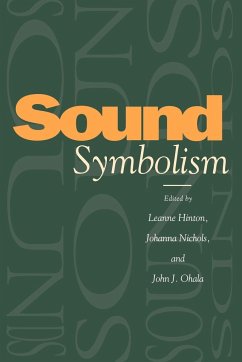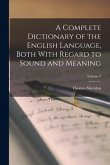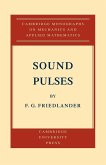A study of the relationship between the sound of an utterance and its meaning.
Sound symbolism is the study of the relationship between the sound of an utterance and its meaning. In this interdisciplinary collection of new studies, twenty-four leading scholars discuss the role of sound symbolism in a theory of language. They consider sound symbolic processes in a wide range of languages from Europe, Asia, Africa, Australia, and North and South America. Beginning with an evocative typology of sound symbolic processes, they go on to examine not only the well-known areas of study, such as onomatopoeia and size sound symbolism, but also less frequently discussed topics such as the sound symbolic value of vocatives and of involuntary noises, and the marginal areas of 'conventional sound symbolism', such as phonesthemes. The book concludes with a series of studies on the biological basis of sound symbolism, and draws comparisons with the communication systems of other species. This is a definitive work on the role of sound symbolism in a theory of language.
Review quote:
"All of the papers are sources of tantalizing, testable hypotheses....of considerable value and evidence of a welcome renewal of interest in some very old questions."
Journal of Linguistic Anthropology
Table of contents:
List of contributors; 1. Introduction: Sound-symbolic processes Leanne Hinton, Johanna Nichols, John Ohala; Part I. Native American Languages North of Mexico: 2. Symbolism in Nez Perce Haruo Aoki; 3. Nootkan vocative vocalism and its implications William H. Jacobsen Jr; 4. Relative motivation in denotational and indexical sound symbolism of Wasco-Wishram Chinookan Michael Silverstein; Part II. Native Languages of Latin America: 5. Symbolism and change in the sound system of Huastec Terrence Kaufman; 6. Evidence for pervasive synesthetic sound symbolism in ethnozoological nomenclature Brent Berlin; 7. Noise words in Guaranà Margaret Langdon; Part III. Asia: 8. i: big a: small Gérard Diffloth; 9. Tone, intonation, and sound symbolism in Lahu: loading the syllable canon James A. Matisoff; 10. An experimental investigation into phonetic symbolism as it relates to Mandarin Chinese Randy J. Lapolla; 11. Palatalization in Japanese sound symbolism Shoko Hamano; Part IV. Australia and Africa: 12. Yir-Yiront ideophones Barry Alpher; 13. African ideophones G. Tucker Childs; Part V. Europe: 14. Regular sound development, phonosymbolic orchestration, disambiguation of homonyms Yakov Malkiel; 15. Modern Greek ts: beyond sound symbolism Brian D. Joseph; 16. On levels of analysis of sound symbolism in poetry, with an application to Russian poetry Tom M. S. Priestly; 17. Finnish and Gilyak sound symbolism - the interplay between system and history Robert Austerlitz; Part VI. English: 18. Phonosyntactics Joan A. Sereno; 19. Aural images Richard Rhodes; 20. Inanimate imitatives in English Robert L. Oswalt; Part VII. The Biological Bases of Sound Symbolism: 21. Some observations on the function of sound in clinical work Peter F. Ostwald; 22. The frequency code underlies the sound-symbolic use of voice pitch John J. Ohala; 23. Sound symbolism and its role in non-human vertebrate communication Eugene S. Morton; Index.
Hinweis: Dieser Artikel kann nur an eine deutsche Lieferadresse ausgeliefert werden.
Sound symbolism is the study of the relationship between the sound of an utterance and its meaning. In this interdisciplinary collection of new studies, twenty-four leading scholars discuss the role of sound symbolism in a theory of language. They consider sound symbolic processes in a wide range of languages from Europe, Asia, Africa, Australia, and North and South America. Beginning with an evocative typology of sound symbolic processes, they go on to examine not only the well-known areas of study, such as onomatopoeia and size sound symbolism, but also less frequently discussed topics such as the sound symbolic value of vocatives and of involuntary noises, and the marginal areas of 'conventional sound symbolism', such as phonesthemes. The book concludes with a series of studies on the biological basis of sound symbolism, and draws comparisons with the communication systems of other species. This is a definitive work on the role of sound symbolism in a theory of language.
Review quote:
"All of the papers are sources of tantalizing, testable hypotheses....of considerable value and evidence of a welcome renewal of interest in some very old questions."
Journal of Linguistic Anthropology
Table of contents:
List of contributors; 1. Introduction: Sound-symbolic processes Leanne Hinton, Johanna Nichols, John Ohala; Part I. Native American Languages North of Mexico: 2. Symbolism in Nez Perce Haruo Aoki; 3. Nootkan vocative vocalism and its implications William H. Jacobsen Jr; 4. Relative motivation in denotational and indexical sound symbolism of Wasco-Wishram Chinookan Michael Silverstein; Part II. Native Languages of Latin America: 5. Symbolism and change in the sound system of Huastec Terrence Kaufman; 6. Evidence for pervasive synesthetic sound symbolism in ethnozoological nomenclature Brent Berlin; 7. Noise words in Guaranà Margaret Langdon; Part III. Asia: 8. i: big a: small Gérard Diffloth; 9. Tone, intonation, and sound symbolism in Lahu: loading the syllable canon James A. Matisoff; 10. An experimental investigation into phonetic symbolism as it relates to Mandarin Chinese Randy J. Lapolla; 11. Palatalization in Japanese sound symbolism Shoko Hamano; Part IV. Australia and Africa: 12. Yir-Yiront ideophones Barry Alpher; 13. African ideophones G. Tucker Childs; Part V. Europe: 14. Regular sound development, phonosymbolic orchestration, disambiguation of homonyms Yakov Malkiel; 15. Modern Greek ts: beyond sound symbolism Brian D. Joseph; 16. On levels of analysis of sound symbolism in poetry, with an application to Russian poetry Tom M. S. Priestly; 17. Finnish and Gilyak sound symbolism - the interplay between system and history Robert Austerlitz; Part VI. English: 18. Phonosyntactics Joan A. Sereno; 19. Aural images Richard Rhodes; 20. Inanimate imitatives in English Robert L. Oswalt; Part VII. The Biological Bases of Sound Symbolism: 21. Some observations on the function of sound in clinical work Peter F. Ostwald; 22. The frequency code underlies the sound-symbolic use of voice pitch John J. Ohala; 23. Sound symbolism and its role in non-human vertebrate communication Eugene S. Morton; Index.
Hinweis: Dieser Artikel kann nur an eine deutsche Lieferadresse ausgeliefert werden.








